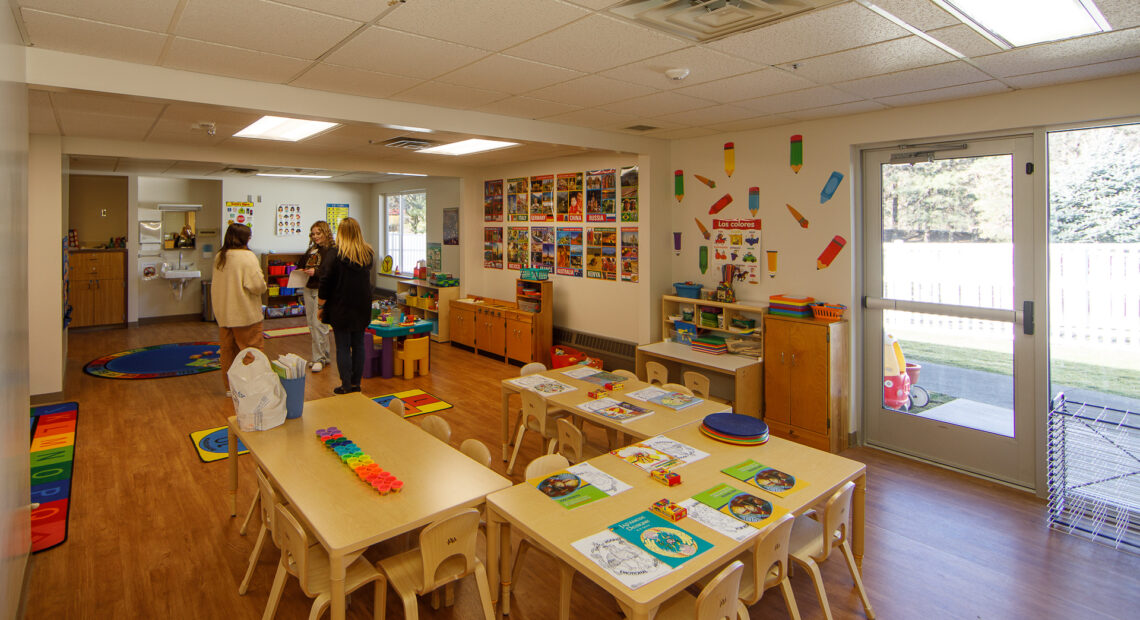
Child care subsidies in Washington could be impacted as state faces budget gap
Listen
(Runtime 1:01)
Read
This year, Washington state faces a significant budget shortfall somewhere between $10 and $12 billion.
As lawmakers meet for the legislative session, they’re deciding what to cut, and day care subsidies could be impacted.
“If we shortchange child care now, we will see long term harm to the economy and long term harm to families,” said Genevieve Stokes, the director of government relations at Child Care Aware of Washington.
Her organization commissioned an analysis to find out how the state’s lack of child care is affecting the economy.
The report from ECONorthwest, which was published in July, found Washington lost nearly $7 billion in 2023 because of the lack of child care statewide. Nearly 40% of surveyed parents reported quitting or being fired since having children.
Miriam Acosta is a mother of four who runs a small day care in Brewster, Washington. Rather than quit her job, she decided to start her own child care program to take care of her own kids, and other children in Okanogan County.

Miriam Acosta works with children on a craft project at her day care in Brewster, Wash. (Credit: Miriam Acosta)
“One hundred percent of my program and families are on state subsidies,” Acosta said. “It’s something our community really relies on — we’re a migrant farm working community.”
Acosta says this is a time where the child care subsidies should be expanded, not cut.
“ A lot of families are in that gap where they don’t make enough to pay for child care, and they don’t qualify for state subsidy, but then they can’t afford to pay out of pocket either,” Acosta said.
In Washington, 63% of people live in a child care desert, according to data collected by the Center for American Progress.
“Too many Washington parents have had to quit their jobs because they can’t afford child care. It’s unacceptable,” said Gov. Bob Ferguson in a Facebook post this summer while campaigning for governor. “It’s hurting families, and losing our economy billions. I’ll fix it. We will reduce what families pay for child care, and expand access.”
As part of the Child Care for Washington campaign, a coalition of more than a dozen organizations and child care providers plan to rally in Olympia on Jan. 22 to call on lawmakers to focus on child care during the legislative session, Stokes said.
House Bill 1128 would create a Child Care Workforce Standards Board composed of employers and child care workers who would work with legislators to set minimum compensation and employment standards for people working in child care.
Right now, families earning at or below 60% of the state median income can get subsidies for child care and early learning through the Working Connections program. That percentage was set to increase to 75% on July 1. That would mean a family of four bringing in around $91,000 would be eligible for the program.
Ferguson wants to delay that expansion over the next four years to save $296 million, with exceptions for families where one parent works for a small business, according to his budget priorities.
Republicans in Washington have their own ideas about how to solve the day care problem.
“We will have a host of child care bills, including a bill addressing restrictions and regulations as well as licensing requirements,” said Rep. Travis Couture, the lead Republican on the House Appropriations Committee.
House Bill 1033 would allow Washington counties to create their own ordinances and local licensing for child care, said Couture.
“The counties know better than the state or a state agency how to best set up their policies,” he said in an emailed statement.
Couture counts himself among legislators who agree with delaying the child care subsidies. “We don’t have the workforce, and we don’t have the facilities,” he said. “If more people are grabbing more subsidies to get more child care, where do they go?”
While lawmakers weigh more government options, employers in Washington have had to find their own creative solutions.
“When it comes to budget cuts in Washington state, it almost always comes down to education and health care,” said Shane McGuire, the CEO of Columbia County Health System.
During the COVID-19 pandemic, McGuire said he had to navigate a wave of staffing shortages due to the collapse of child care services. Columbia County is one of the most rural areas of Washington and had no child care facilities after the only three providers closed in 2020.
“With schools closed because of COVID and no child care, I had nurses calling in because they didn’t have care options for their kids,” McGuire said, which impacted the ability of the hospital to provide care for patients.
After a stopgap measure to use a local school for temporary child care, McGuire and a hospital district working group spearheaded a project to convert an assisted living facility on the hospital campus to a child care center.
Opened in April 2024, RoseMary’s Place offers 45 slots and is available for both healthcare employees and the wider community. The facility is run by the YWCA and has the ability to take on infants.
Despite the progress, McGuire said the cost of child care remains a significant barrier for many parents. “If you put an infant into child care, it could be $1800 a month … I don’t know that child care is sustainable on the trend or track that it’s on,” he said.
Both McGuire and Acosta say they are hopeful some of the focus on the day care crisis shifts to more rural areas of Washington.
“We want help for child care providers to be able to afford more professional development skills they need to help children to meet their goals and their milestones and prepare for kindergarten,” Acosta said.
Research shows high-quality programs for disadvantaged children from birth to 5 years old deliver a 13% return on investment.
“Children are the future,” Acosta said. “And their parents are the essential workers who move our economy forward.”
















